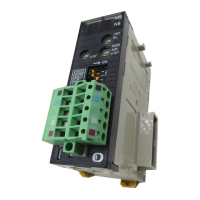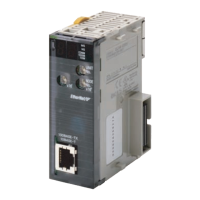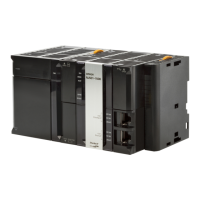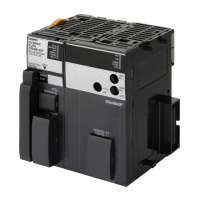269
Serial Communications Section 6-3
memory. Up to 256 bytes (including the start and end codes) can be trans-
ferred in no-protocol mode.
The following table shows the message formats that can be set for transmis-
sions and receptions in no-protocol mode. The format is determined by the
start code (ST) and end code (ED) settings in the PLC Setup.
• When more than one start code is used, the first start code will be effec-
tive.
• When more than one end code is used, the first end code will be effective.
Note 1. If the data being transferred contains the end code, the data transfer will
be stopped midway. In this case, change the end code to CR+LF.
2. There is a setting in the PLC Setup (address 162: no-protocol mode delay)
that will delay the transmission of data after the execution of TXD(236).
Refer to the CJ-series Programmable Controllers Programming Manual
(W340) for more details on TXD(236) and RXD(235).
6-3-3 NT Link (1:N Mode)
In the CS/CJ Series, communications are possible with PTs (Programmable
Terminals) using NT Links (1:N mode).
Note Communications are not possible using the 1:1-mode NT Link protocol.
High-speed NT Links are possible in addition to the previous standard NT
Links by using the PT system menu and the following PLC Setup settings (not
supported by CS-series pre-EV1 CS1 CPU Units). High-speed NT Links are
possible, however, only with the NT31(C)-V2 or NT631(C)-V2 PTs.
Start code
setting
End code setting
No Yes CR+LF
No data
(data: 256 bytes max.)
data+ED
(data: 255 bytes max.)
data+CR+LF
(data: 254 bytes max.)
Yes ST+data
(data: 255 bytes max.)
ST+data+ED
(data: 254 bytes max.)
ST+data+CR+LF
(data: 253 bytes max.)
No-protocol mode
transmission delay
Execution of TXD(236)
Transmission
Time

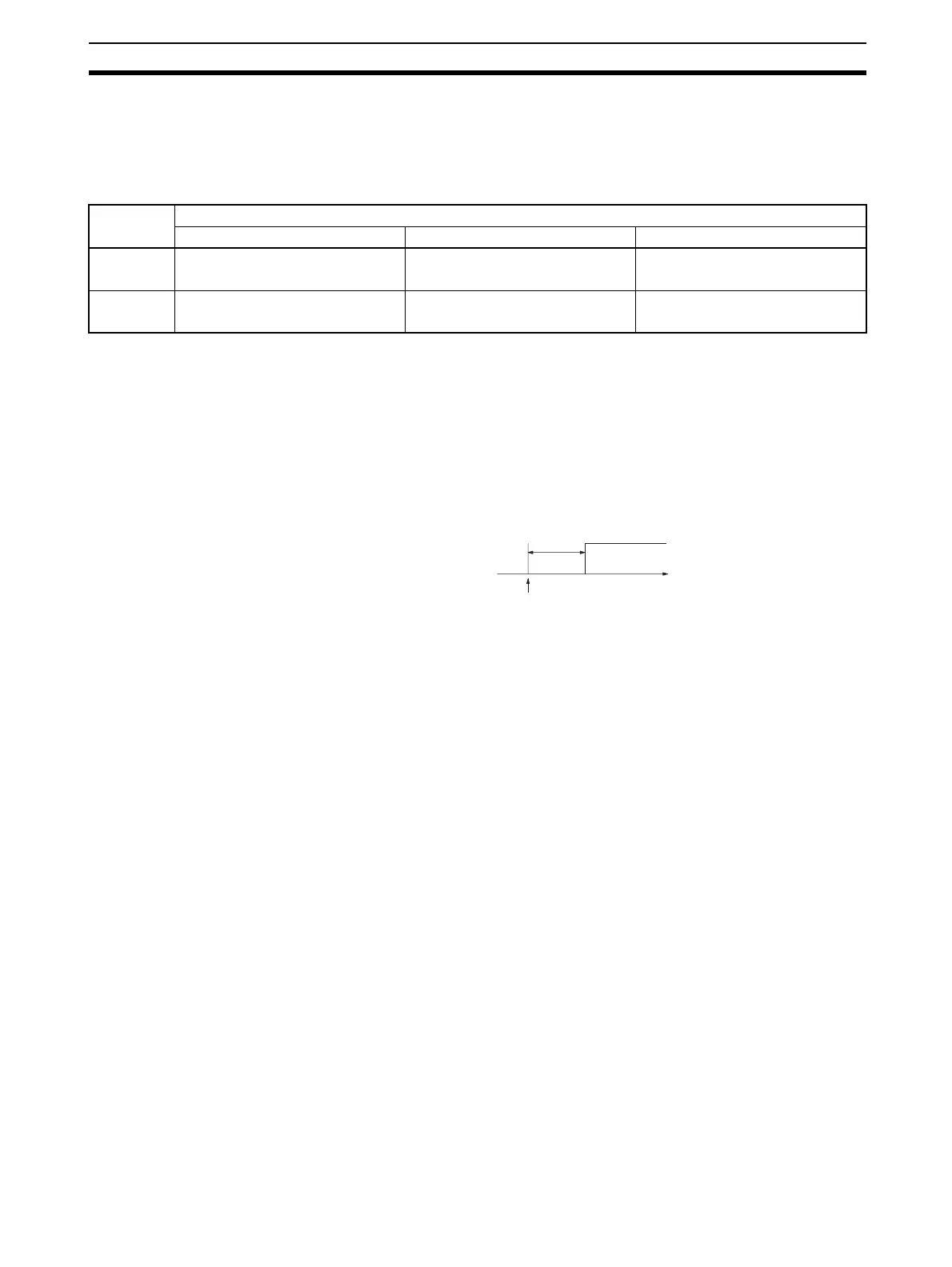